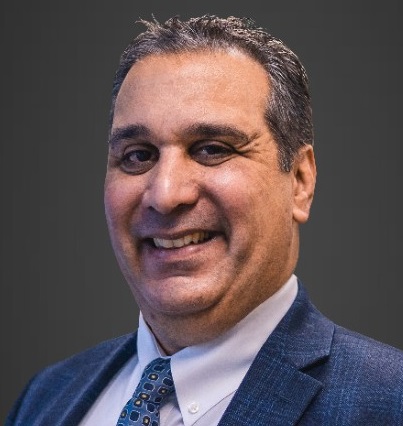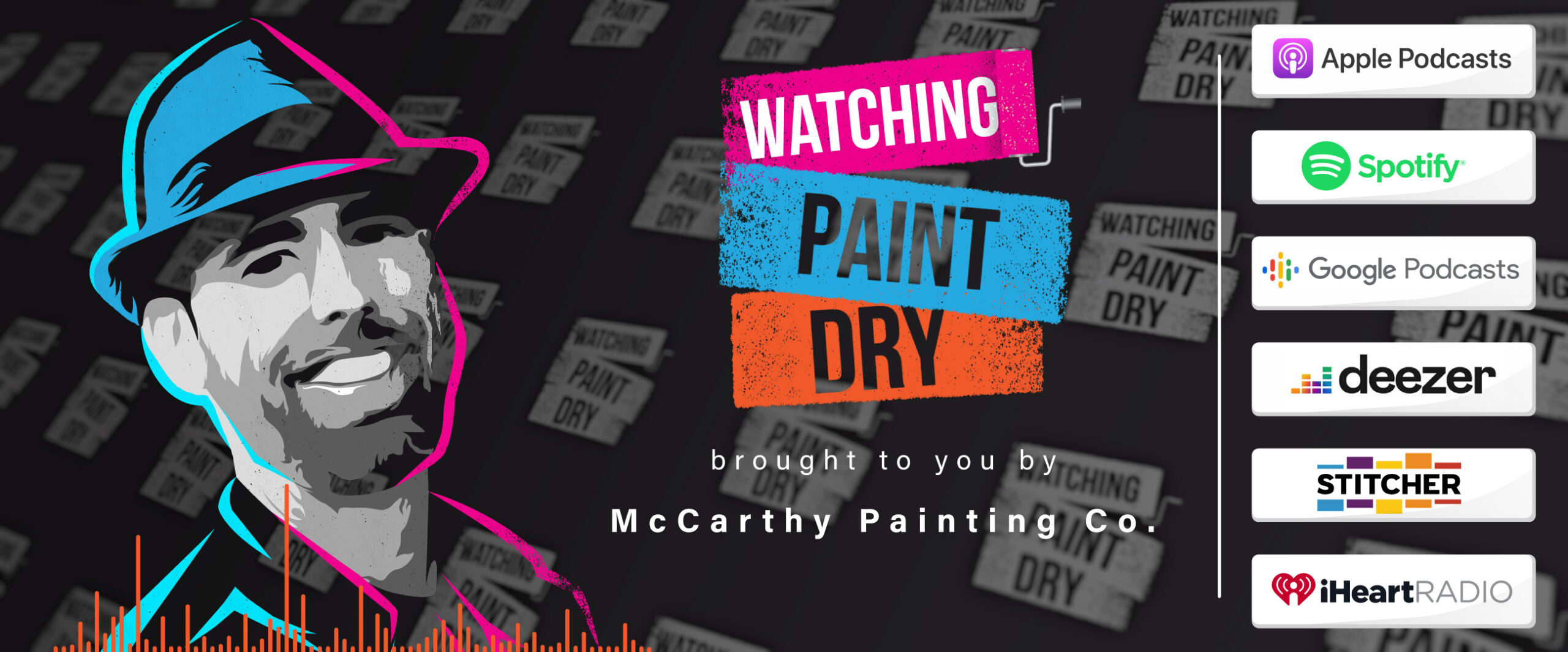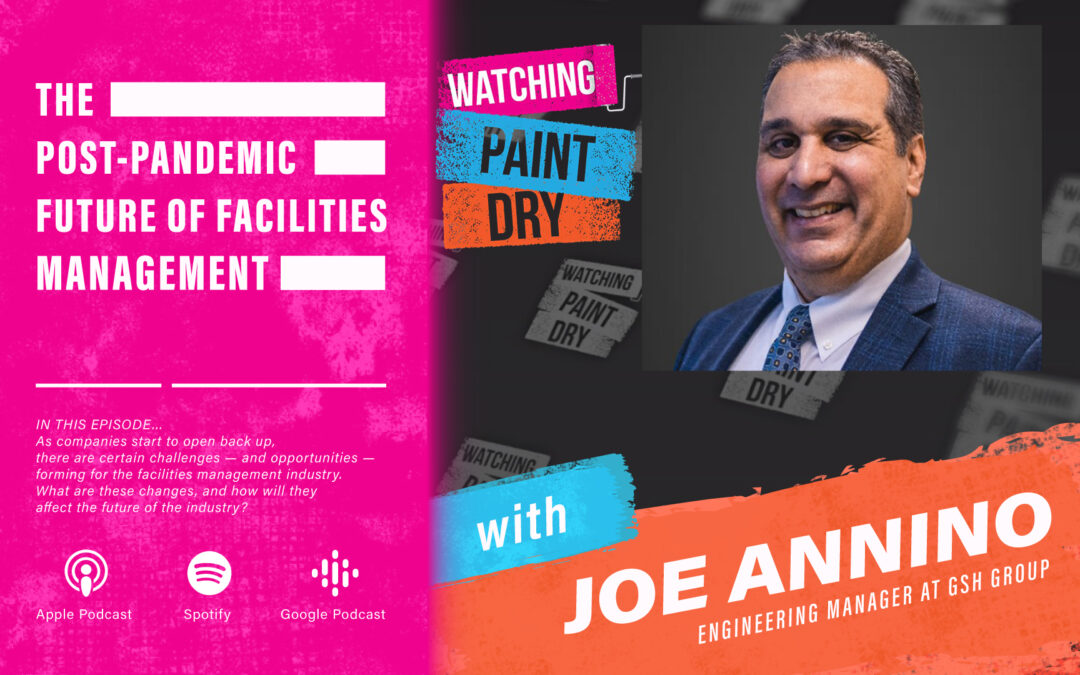 Joe Annino is the Engineering Manager at GSH Group, a leading facilities management company that provides clients with custom-tailored services, products, and resources. At GSH Group, Joe is responsible for the organization and support of stationary engineers and staff in commercial office buildings, campus facilities, and industrial complexes. He also created a four-year academy program for GSH Group that includes educational courses on HVAC/R, electrical, motor controls, pneumatics, building monitoring systems, safety, communication, and customer service.
Joe Annino is the Engineering Manager at GSH Group, a leading facilities management company that provides clients with custom-tailored services, products, and resources. At GSH Group, Joe is responsible for the organization and support of stationary engineers and staff in commercial office buildings, campus facilities, and industrial complexes. He also created a four-year academy program for GSH Group that includes educational courses on HVAC/R, electrical, motor controls, pneumatics, building monitoring systems, safety, communication, and customer service.
Joe’s specialties in facility management, stationary engineering, building maintenance, business management, strategic planning, and energy conservation have led him to successfully implement processes that enhance efficiency. He is currently a part of the International Facility Management Association (IFMA), which has designated him as a Facilities Management Professional in Operations and Maintenance.
Here’s a glimpse of what you’ll learn:
- Joe Annino describes his role at GSH Group
- Joe talks about the challenges — and opportunities — in the facilities management industry following the pandemic
- How is the industry evolving, and how can you begin a career in facilities management?
- Joe shares how he got his start in facilities management
- How Joe’s youth soccer coaching skills have translated into his professional career
- The growing demand for energy conservation in building management
In this episode…
As companies start to open back up, there are certain challenges — and opportunities — forming for the facilities management industry. What are these changes, and how will they affect the future of the industry?
Joe Annino is working with clients to craft a customized plan for reopening. According to Joe, this looks different for every business; however, they all have something in common: developments in technology, systems, and processes as we prepare for the post-pandemic world.
In this episode of Watching Paint Dry, Greg Owens is joined by Joe Annino, Engineering Manager at GSH Group, to talk about the changes taking place in the facilities management industry. Joe discusses his own career path in the industry, how companies are trying to be more efficient following the pandemic, and the best steps for getting your career started in facilities management. Stay tuned!
Resources Mentioned in this episode
- Greg Owens on LinkedIn
- McCarthy Painting
- McCarthy Painting Contact No.: 415-383-2640
- McCarthy Painting Email Address: info@mccarthypainting.com
- Joe Annino on LinkedIn
- GSH Group
- International Facility Management Association (IFMA)
- Laney College
- San Jose City College
Sponsor for this episode…
This episode is brought to you by McCarthy Painting, where we serve commercial and residential clients all around the San Francisco Bay area.
We’ve been in business since 1969 and served companies such as Google, Autodesk, Abercrombie & Fitch, FICO, First Bank, SPIN, and many more.
If you have commercial facilities in the San Francisco Bay Area and need dependable painters, visit us on the web at www.mccarthypainting.com or email info@mccarthypainting.com, and you can check out our line of services and schedule a free estimate by clicking here.
Episode Transcript
Intro 0:03
Welcome to the Watching Paint Dry podcast where we feature today’s top facility managers, property managers and property owners talking about the challenges and opportunities of managing hundreds of 1000s of square feet of real estate and how to beautify and improve their properties. Now, let’s get started with the show.
Greg Owens 0:32
Hello, everyone. This is Greg Owens with another episode of the Watching Paint Dry podcast. And where are we at? We’re sort of like mid May now. And things are feeling better and better and better. As the economy opens up and the things open up. I can’t believe that I went to the first time and worked out in the gym this morning. And nobody was wearing masks. I walked in without my mask on. It’s been a week since I was there. And I looked around, I was like, Wow, it’s something different. And it was odd feeling to have to be not wearing a mask amongst that many people. This podcast is we’re continuing our discussion with discussions with building owners, property managers, facilities, managers, and everybody that supports those services. And this podcast is sponsored by my company McCarthy Painting, McCarthy Painting. There’s all types of both interior and exterior painting throughout the entire San Francisco Bay Area. We do both residential and commercial and commercial. You know, a lot of our projects have been retail like h&m stores or Abercrombie and Fitch banks, like Chase Bank and first First Bank. We’ve done some shopping centres here recently. I’m in Dublin right now. And we’re doing a shopping centre. And many, many other companies, high tech companies like Google and zooks and spin and things like that. To learn more about McCarthy Painting, go to info@McCarthypainting.com. And I’m super excited to have Joe here, Joe Annino. Annino. Yes, Annino. Joe Annino from GSH Group, and we’ll find out more about that. And welcome to the podcast. Joe, how are things going for you as we coming close to summertime here?
Joe Annino 2:23
Yeah, well, first, thanks for having me. I’m super excited to be doing this. What’s my first official podcast? Yeah, and yeah, things are going well. It’s good to be picking up like, like you said that. Yeah, super. It’s a crazy time and things seem to be reopening. And hopefully, getting to a point where we’ll be back to normal here in the near future.
Greg Owens 2:48
Yeah. For the first time, it felt like it looked like things were normal, although it didn’t feel like normal when I was in this gym, and nobody was wearing masks because it just felt so different after all of this time, right?
Joe Annino 3:03
Sure. Absolutely.
Greg Owens 3:05
It’s so great. Seeing your background. Unfortunately our podcast listeners won’t be able to see it but you have a lot of what what what inspired your creativity there is that you or is this your son’s room?
Joe Annino 3:17
No, this this is my room. So in the backdrop is just a lot of things that I like Bay Area born and raised, you know, Italian background so in the end also Big Star Wars fan. So you know, with with this with this job and with COVID a lot of people doing work from home. So this is now you know, sort of my my claimed room of the house. So and then plus getting on zoom calls. You know, it’s always nice to have but people sort of peek into to your world a little bit so they can see what you like. And right. Yeah, so so so not my son’s room. This is mine. Yes, I have you know, stuff from the 40 Niners and warriors Big Star Wars fan. So I have a couple Darth Vader and Stormtrooper there in the background and
Greg Owens 4:06
yeah, it’s great. It’s gonna it’s gonna inspire me to do something different with my wall in my Yeah, for sure. Because I like I like how colorful it is. It’s wonderful. Yeah, and and I, you know, I want to get into about what GSH Group does. My understanding is it’s your new supply or partner with companies or buildings and bring in the the talent basically, that’s going to take care of their building, do the maintenance, everything from all the facilities what everything a facilities manager would do on site but you’re supplying and then having that as an outsourced sort of entity, everything
Joe Annino 4:45
apps, absolutely. So our company does integrated facility management and stationary engineering technical trades for for buildings, you know whether they be high rise buildings residential Universities are educational facilities, every biotech facilities each, each building is a little bit different. So, so my role is to help our clients find talent. And not only find talent, but then also to come in and help them with processes, procedures, mostly compliance related. So putting those people into the buildings that can operate them is sort of the gist of it. But then, of course, evolved with, you know, with hiring vendors, if needed, such as yourselves, or it just depending what what the property’s needs are,
Greg Owens 5:42
and what type of properties is your niche is it or is it whatever is whatever comes up.
Joe Annino 5:51
So most of our properties are commercial class, a property’s mostly high rise is what our portfolios mostly made up of. But we also do have low rise, we have mobile route, so perhaps a client has several buildings. So that would what that looks like, is a guy in a truck, going from building to building, you know, taking calls as they come up anything from a light out to a toilet, not working all the way up to the actual operation and maintain the energy efficiency of a property. Yeah, and I would think that, like some of these properties that we’ve worked on, must have like unbelievable amounts of care and hand holding, and that kind of thing that has to take place, like some of the skyscrapers downtown San Francisco. And then then some of like you said, like a guy in a truck coming out the multiple different buildings,
Greg Owens 6:46
we did some a bunch of storage facilities, right, that has very little traffic, it’s like cold storage, long term storage. And, and so that would require less hands on approach, I would think
Joe Annino 6:58
cold storage can be very demanding, too, depending on what’s in the storage space, cold storage can be super demanding, because the cold storage stops working, all of a sudden, you might have a whole bunch of product in there, that is not going to last.
Greg Owens 7:14
So right. So if it’s like if it’s food or something like that, or one of these COVID vaccines or something like that. Exactly. Yeah. That makes sense.
Joe Annino 7:25
Yeah. So I mean, that’s, that’s part of what we do, you know, figuring out what the needs of the property are. So if it’s a biotech facility, or if it’s a museum, if it’s a, this, depending on what’s in the space, is sort of what drives our work and what our clients need to do to protect their
Greg Owens 7:44
assets. And you will, as we all know, 2020 was unbelievably challenging, really challenging for facilities managers having to wear multiple hats, especially here in California, with not only the pandemic and the considerations around that we had, we had civil unrest, the fires, just so many different major hits like that. And now that we’re through sort of that episode, and all of that, where do you see as challenges for 2021 coming into summertime here,
Joe Annino 8:19
come into summertime, it’s going to be the it’s going to be the the re occupancy of these buildings, even even though restrictions are loosening, I believe that there is still demand for people to work collaboratively in the same space. But I don’t think that’s going to look the way that it did before. I know, I see a lot of people that I talked to, and some of my friends who are outside of the industry that just sort of work their, their their jobs, but many of them are are not planning to come back until maybe September. And even when they do come back, it will be in a very limited way, maybe to two days a week when they used to go five days a week. And I certainly think there’s going to be an uptick in janitorial. I think this is the way it’s gonna look. I mean, when people used to work next to each other, I think that’s not going to be the same anymore. You know, they’ll still be spaces where they, you know, maybe there’s a rotation in educational facilities. And my own daughter is going through it right now with going back to school now and how that’s gonna look right now. It’s, you know, that it’s only going to be maybe a couple days, there’ll be a rotation of things. And yeah, so it’s not going to look the same. Is this figuring out what that is and working with our clients to figure out what that is that right? Yeah.
Greg Owens 9:49
And I would think each one is is different. I was just reading an article about Delta Airlines, their facility in Atlanta, the the airport Where they don’t, they had to get like flight attendants to help sort of clean, clean up the lounge areas because there just wasn’t enough janitorial able to come back for the demand of passengers that are happening right now. So there’s like, you know, a little bit in the supply chain things are, it’s not as easy as people think we can’t just turn this switch on.
Joe Annino 10:21
Exactly. Yeah. I mean, there’s already a lot of preparation for things we think about the fires that you brought up earlier. Usually what what are folks in the field that are operating the buildings when they’re looking for ways to help mitigate smoke and smell to come into the building? So what does that mean carbon filtration, or better filtration systems, for air purifiers going into spaces. So it’s now there’s quite a bit to be discovered as we go along. And I think it’s just going to be a building by building basis on how things are set up as to how we, how we influence the sort of the future of how buildings operate. And the buildings that you’re involved in. Something around that culture also,
Greg Owens 11:08
is that there’s so many It was such a diversified portfolios that could only imagine the culture is each one of those companies, the companies that are occupying some of those buildings, or in the case of some of the skyscrapers, it’s like multiple tenants and multiple different cultures inside there. What do you see in that regard? As far as the culture is? And what here in the San Francisco Bay Area? You’re mainly San Francisco Bay Area? For? Yes,
Joe Annino 11:32
mainly? Yeah, that’s, that’s my role is here that in the in the Bay Area as a company, we’re global. So yes, here in the Bay Area, it’ll just depend again, it just depends on the building. If I’m a, if I’m a biotech facility, and I’m running experiments, well, those experiments are probably done within a space. And those spaces need to be monitored. 20 473 65. And now, how does how does one do that to make sure that things like temperature and humidity control our correct lighting controls, and then also helping to come up with the getting sort of involved in other things like security, perhaps, you know, they say, Hey, you know what, we don’t want people coming in here unless they have a badge. And the only way to do that is to, you know, maybe rekey a section of a floor or rekey in multiple floors, or maybe put in, you know, electronic means of locking entryways in such
Greg Owens 12:36
that all the codes that go along with that, yeah, we just help the client, we do get involved in some tenant improvement construction work. And we had to put some doors in in some hallways, but then that whole problem of like, Okay, how do we lock? How is the company going to lock these doors, who has access to this, this part of the building now is a unbelievably long discussion about what happens next door went in, and then it’s like, well, now we’ve got to figure out security, right? And how to, how to maintain that control who comes in who goes and that’s it. And that’s becoming more and more important with this, because people don’t want just stragglers walking in to their facilities now, especially now.
Joe Annino 13:17
I mean, some of the buildings that I go to, you can’t get in unless you’re placing a phone call to somebody that will then come out and get you and bring you into the property. Yeah, you can look around.
Greg Owens 13:28
There’s no lobby for a lot of buildings anymore. There’s no receptionist. What not like the old days right now.
Joe Annino 13:35
Yeah, you know, just open the door and go into the lobby and
Greg Owens 13:38
ask for somebody anymore. No, that’s been on for a long time since then, I think even more so. I noticed some of the buildings we’ve even gotten involved in and you go in the elevator, and you only have like it you don’t actually give it an option. It’s like you go your appointment time. And then the elevator takes you to the floor. And then like knows you reading your card, it knows who you are, takes you to the floor. It’s gonna drop you off.
Joe Annino 14:01
Exactly. Yeah, destination dispatch. elevators. Very, very cool technology.
Greg Owens 14:07
Really cool. It’s a little freaky, because you get in the elevator and you’re like, What do I do? And is this work? Is this guy work? Is my my question like?
Joe Annino 14:16
Yeah, it’s like, well, you know, I wanted to go to the second floor, but then I’m in the elevators like, no, I really want to go to the third floor, but there’s no button to push for the third out and go. Go back in. Right, I
Greg Owens 14:29
think we’re gonna see much more of that story, because that also brings in the whole touchless.
Joe Annino 14:33
Yeah, and I started, I tell you the one of the things that I really liked about those systems, that they’re super efficient with moving people find that you don’t have as many build ups in your lobby if you have a busy building, which I think which is the original sort of purpose of the design was to move people more efficiently throughout a big property. Instead of having an elevator stop and multiple floors, now you It’s only stopping it maybe just a couple floors with the people that are going to those floors, which makes the round trip experience a lot shorter.
Greg Owens 15:07
Right, right. Yeah, I mean, moving people around post COVID is going to be interesting, you know, with all these incidents, seeing how this unfolds and develop specially in some of those skyscrapers that are old in San Francisco that don’t have this kind of technology. Yeah, if there are only allowing a certain amount of people per elevator or that kind of thing, and trickier.








